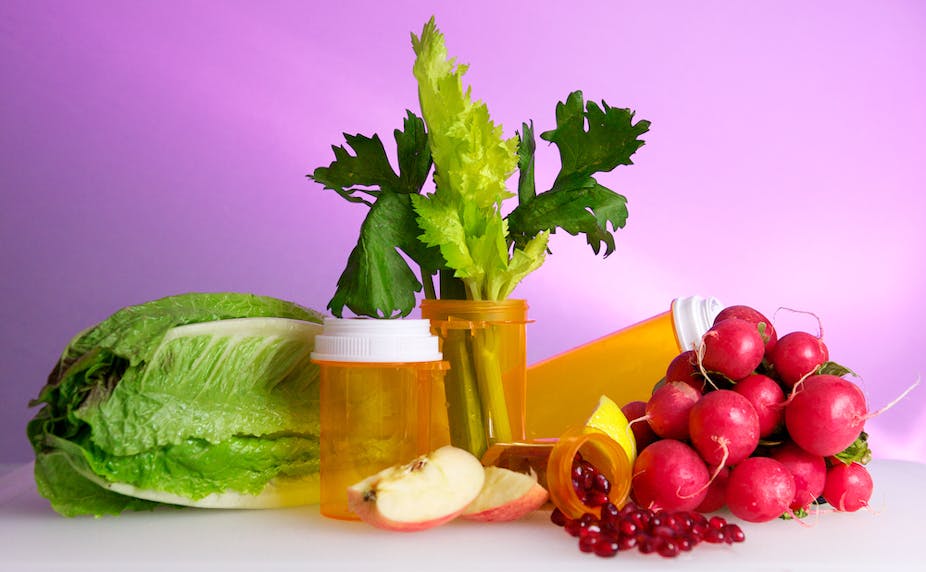It seems there’s no end to the production line of so-called “therapeutic” products promoted to trusting consumers by companies willing to make untested claims.
The latest is Souvenaid®, a product promoted as a “medical food” for “the treatment of mild Alzheimer’s disease” by its manufacturer, Nutricia Australia Pty Ltd.
Souvenaid’s spruikers also claim it is “clinically proven”. It recently featured as a “memory drink” on Channel 9’s A Current Affair (with medical endorsement) and has been heavily promoted in pharmacy publications.
Ken Harvey, a co-author of this article, has submitted complaints to the Therapeutic Goods Administration (TGA) and the therapeutic products Complaint Resolution Panel (CRP), arguing the promotion of Souvenaide breaches the Therapeutic Goods Act 1989 and the Therapeutic Goods Advertising Code 2007.
This is because the product appears to be a therapeutic good but isn’t listed on the Australian Register of Therapeutic Goods (ARTG) and lacks approval to be promoted as therapy for a serious disease.
Souvenaid contains a mix of omega-3 fatty acids, vitamins, minerals and other nutrients recommended by Australian Dietary Guidelines 2013. With one exception (uridine monophosphate), all the ingredients are listed as suitable for use in complementary medicines by the TGA.
The claims, ingredients and recommended dose satisfy the definition of a therapeutic good contained in the Therapeutic Goods Act 1989. If Souvenaid were classified as a therapeutic good it should be listed with the TGA on ARTG and comply with the Therapeutic Goods Advertising Code 2007.
The advertising code prohibits the promotion of products for serious diseases such as Alzheimer’s disease. It’s possible to obtain advertising approval from the TGA for a restricted representation but a case must be made, including substantiating evidence and an explanation why approval would be in the public interest.
The Code also prohibits endorsement of products by health-care professionals and requires advertisements to be pre-approved. It states:
an advertisement for vitamins shall not imply that vitamin supplements are a substitute for good nutrition or a balanced diet.
The Code also gives clear advice about the use of the words “clinically proven”. While there are ongoing concerns about the Codes’ lack of sanctions it does provide public accountability, if not redress.
Souvenaid’s manufacturer claims that the ingredients of one bottle (the recommended daily dose):
provide the equivalent nutritional benefit of 1 kg of tomatoes, 1.2 kg broccoli, 710 g of spinach, 100 g of fresh tuna, 100 g of minced beef, 4 eggs, one orange and a handful of brazil nuts.
But this “equivalence” of the product ingredients with nutritious foods undermines the epidemiologically proven value of a Mediterranean diet and Australian Dietary Guidelines 2013. These dietary alternatives to “medical foods” have been shown to reduce the risk of developing memory impairment and dementia as well as reducing symptom burden after diagnosis. Such diets also protect against heart disease.
In addition, the results obtained in the scientific studies cited by the manufacturer largely lack statistical significance, or are of dubious clinical significance and not in accord with the CRP guidelines on “clinically proven”.
There is an uncritical “help sheet” about the product on Alzheimer’s Australia website. This claims that Souvenaid® is a “Food for Special Medical Purposes” under Standard 2.9.5 of the Food Standards Code of Food Standards Australia New Zealand (FSANZ).
The case raises important issues about the consistency of regulations for medicine and food. The sale and supply of food is regulated by state and territory food legislation while the importation of food is subject to Commonwealth laws.
The manufacturer’s website makes much of the need for Souvenaid to be taken under medical supervision but it (and Internet pharmacies) promote sales “for the treatment of mild Alzheimer’s disease” direct to consumers online.
The CRP and TGA have now handballed the complaint to the NSW Food Authority. It will be interesting to see what will happen. There’s an increasing trend for manufacturers of products that used to be called “complementary medicines” to redefine them as foods.
Reducta Fat Blaster (ARTG no: 176366), for instance, containing the infamous Slimaluma (caralluma adscendens var. fimbriata) was cancelled from the ARTG by the TGA but has reappeared as Reducta FatBlaster Shake promoted for “appetite control”.
Food advertising standards need to be harmonised with the Therapeutic Goods Advertising Code. What’s more, there need to be timely and effective sanctions for breaches of the Advertising Code, regardless of whether they relate to a food or a therapeutic good.

